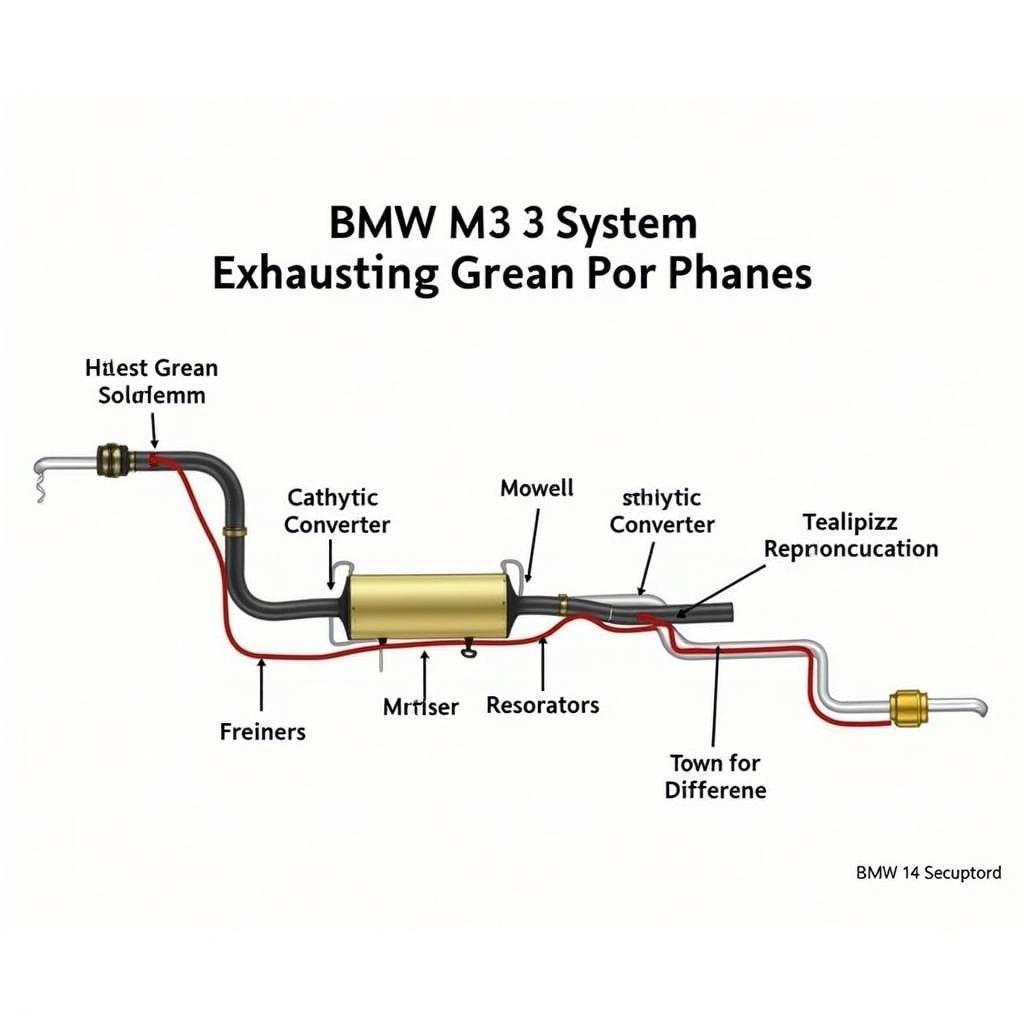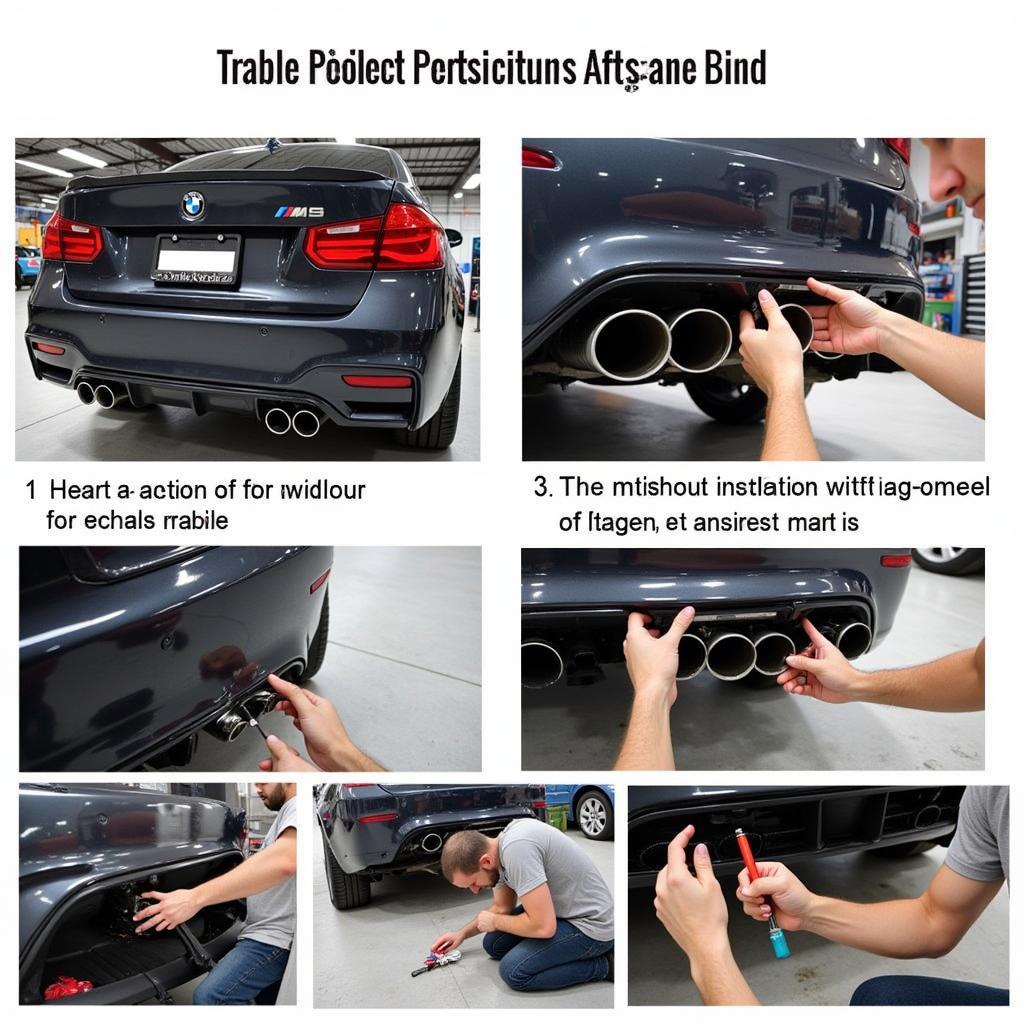The iconic roar of a BMW M3’s exhaust is a defining characteristic of this high-performance machine. Whether you’re considering buying an M3, already own one, or simply appreciate the symphony of a well-tuned engine, understanding the nuances of the BMW M3 exhaust sound is crucial. This guide delves into everything you need to know about this captivating auditory experience.
Decoding the BMW M3 Exhaust Note
The BMW M3 exhaust sound isn’t just noise; it’s a carefully engineered composition of mechanical precision and acoustic design. From the engine’s firing order to the exhaust system’s intricate pathways, every component contributes to the final sound. The distinct growl at low RPMs, the escalating howl as the engine climbs the rev range, and the crackling and popping on deceleration are all part of the M3’s sonic signature. This symphony is a testament to BMW’s commitment to creating a driving experience that engages all the senses. Similar to the 2013 bmw m3 exhaust sound, the sound is a key feature for enthusiasts.
What Makes the M3 Exhaust Sound Unique?
Several factors contribute to the unique BMW M3 exhaust sound. The engine’s architecture, including the number of cylinders and their configuration, plays a significant role. The exhaust system itself, from the headers to the mufflers and tailpipes, is meticulously designed to shape the sound waves and produce the desired acoustic profile. Even the materials used in the exhaust system can influence the final sound.
How the Exhaust System Works
The exhaust system in a BMW M3 isn’t just about channeling exhaust gases away from the engine. It’s a complex system that plays a vital role in performance and sound. The headers collect the exhaust gases from the engine cylinders and direct them into the exhaust pipes. The catalytic converter reduces harmful emissions, while the mufflers and resonators fine-tune the sound by absorbing or reflecting specific frequencies. Finally, the tailpipes release the exhaust gases and project the sound.
 BMW M3 Exhaust System Diagram
BMW M3 Exhaust System Diagram
Modifying the BMW M3 Exhaust Sound
Many M3 owners seek to personalize the exhaust sound of their vehicles. Aftermarket exhaust systems offer a range of options, from subtle enhancements to aggressive roars. These systems can alter the volume, tone, and even the crackling and popping characteristics of the exhaust note.
Choosing the Right Aftermarket Exhaust
Selecting the right aftermarket exhaust system depends on individual preferences and local regulations. Factors to consider include the material, design, and sound profile of the exhaust system. It’s essential to choose a system that complies with local noise ordinances and doesn’t negatively impact the vehicle’s performance or emissions. This is similar to choosing the right 2012 bmw m3 exhaust sound.
Installation and Tuning
Proper installation and tuning are crucial for maximizing the benefits of an aftermarket exhaust system. Professional installation is recommended to ensure proper fitment and prevent leaks. Tuning the engine management system can further optimize the performance and sound of the upgraded exhaust.
 BMW M3 Aftermarket Exhaust Installation
BMW M3 Aftermarket Exhaust Installation
Common BMW M3 Exhaust Issues
Like any mechanical component, the BMW M3 exhaust system can experience issues over time. Common problems include leaks, rust, and damage to the mufflers or resonators. Regular inspections and maintenance can help prevent these issues and ensure the longevity of the exhaust system. For instance, the 2011 bmw m3 exhaust sound might have specific common issues related to its model year.
Diagnosing and Troubleshooting Exhaust Problems
Diagnosing exhaust problems often involves inspecting the entire system for visible damage, leaks, or unusual noises. Specialized tools can be used to pinpoint leaks or measure exhaust backpressure. Addressing these issues promptly can prevent further damage and maintain the performance and sound of the M3. You can compare this with the 2010 bmw m3 exhaust sound troubleshooting.
Maintenance and Repair
Regular maintenance, such as cleaning and inspecting the exhaust system, can help prevent issues. Repairing or replacing damaged components should be done by qualified technicians to ensure proper function and preserve the M3’s iconic exhaust sound. Understanding the 2013 bmw m3 stock exhaust sound can be a helpful benchmark.
Conclusion
The BMW M3 exhaust sound is more than just a byproduct of combustion; it’s an integral part of the driving experience. From the factory-tuned symphony to the personalized roar of an aftermarket system, the M3’s exhaust note is a testament to BMW’s engineering prowess. Understanding the intricacies of this system allows owners and enthusiasts to appreciate and personalize their M3’s sonic signature.
FAQ
-
What makes the BMW M3 exhaust sound so distinct? The combination of engine design and exhaust system tuning creates the unique M3 sound.
-
Can I modify my M3’s exhaust sound? Yes, aftermarket exhaust systems offer a range of sound customization options.
-
Are there any legal restrictions on modifying exhaust systems? Yes, local noise ordinances may restrict exhaust modifications.
-
How can I maintain my M3’s exhaust system? Regular inspections and cleaning can help prevent issues.
-
What are some common M3 exhaust problems? Leaks, rust, and damage to mufflers or resonators are common issues.
-
How can I diagnose exhaust problems? Visual inspections and specialized tools can help identify exhaust issues.
-
Where can I get my M3’s exhaust system repaired? Qualified technicians can repair or replace damaged exhaust components.
Need help with your BMW M3 exhaust? Contact us via Whatsapp: +1 (641) 206-8880, Email: CARDIAGTECH[email protected] or visit us at 276 Reock St, City of Orange, NJ 07050, United States. We offer 24/7 customer support.

